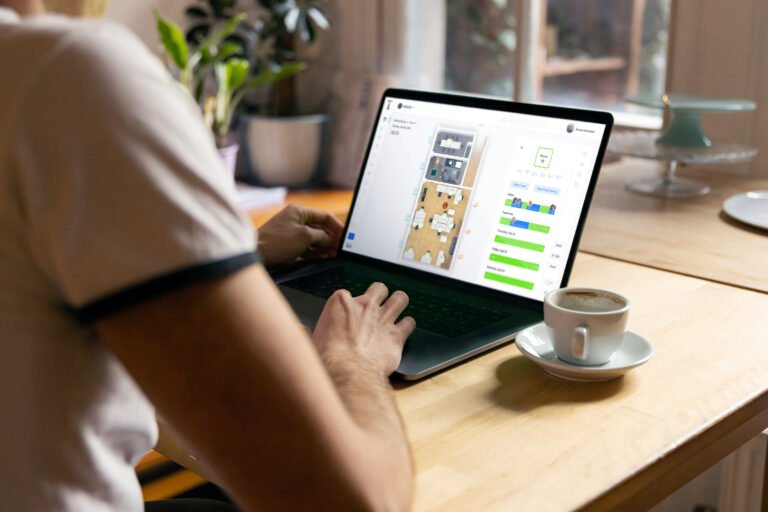
The modern workplace has undergone a significant transformation, embracing open layouts, flexible work arrangements, and collaboration spaces. Amidst this evolution, the management of meeting rooms has become a critical aspect of maintaining productivity and fostering effective communication. So let’s dive into the multifaceted challenges faced in meeting room management and discuss the detailed solutions to tackle them head-on.
Double bookings and scheduling conflicts are common in a dynamic work environment where multiple teams vie for limited meeting spaces. These clashes can disrupt workflows, impede project progress and lead to employee frustration.
Solution
Implement a centralised meeting room booking system equipped with real-time updates. This technology allows employees to view available slots, book/cancel rooms, and receive immediate notifications even on their mobile phones, eliminating the risk of double bookings.
Unused meeting rooms due to no-shows or ghost meetings waste valuable resources and prevent other teams from utilising these spaces effectively.
Solution
Send automated reminders to meeting organisers and attendees before the scheduled meeting time. These reminders can help minimise no-shows and prompt cancellations for no longer required meetings.
Allocating meeting rooms or any other collaborative working spaces based solely on availability can result in mismatched room sizes and inadequate meeting facilities.
Solution
During the booking process, gather details about the meeting’s requirements, such as the number of participants, audiovisual needs, and room layout preferences. This information will aid in allocating the most suitable space for each meeting and will facilitate meeting room management.
Employees can waste valuable time searching for suitable rooms without proper visibility into meeting room schedules and availability.
Solution
Integrate the meeting room booking system with widely-used calendar applications like Google Calendar and Microsoft Outlook. This enables employees to seamlessly schedule meetings and reserve rooms within their preferred calendar platform.
And the other solution could be to mount meeting room displays near the meeting room, so your colleagues could see from afar if the meeting room is available or booked and even book it on the spot through the display.
Relying on manual methods, such as emails or paper-based booking sheets, can lead to confusion, errors, double bookings, and time-consuming procedures.
Solution
Invest in a digital booking system with a user-friendly interface. This system should allow employees to quickly check availability, make reservations, and receive instant confirmation. Some systems have auto-bookings – use office sensors that automatically reserve the room whenever somebody walks in.
Meeting rooms may have technical issues, inadequate equipment, or lack of necessary supplies, leading to meeting disruptions.
Solution
Establish a regular maintenance schedule for audiovisual equipment and ensure a procedure for promptly reporting and addressing issues. Keep meeting rooms with essential supplies like markers, paper, and adaptors.
Set up automatic email or app-based reminders for meeting organisers and participants. Reminders should include essential details like the meeting time, room location, and agenda so there would be no ghost meetings.
Enable seamless integration with popular calendar applications. This integration ensures employees can schedule meetings and reserve rooms directly from their existing calendar interfaces. Some have built-in features like Outlook Plugin to help find the most suitable room with the right size and amenities directly from the calendar.

Implement a booking process that collects specific requirements for each meeting. This could include details like expected attendance, audiovisual needs, and seating arrangements. This way, meeting room management will become much easier and faster.
Adopt a robust digital meeting room booking system that could offer a comprehensive view of room availability, enable real-time bookings and cancellations, and facilitate easy modifications and cancellations. The system should be user-friendly for your employee’s easy usage. Ideally, it should have a web dashboard and a mobile app so that notifications can reach people anywhere and anytime.
Install digital screens outside meeting rooms that display real-time booking information and meeting room name. This provides instant visibility into room occupancy and helps users identify their reserved spaces without confusion. Or even book or cancel the room on the spot.
Analyse meeting room usage data periodically. Look for patterns in peak usage times, frequently unused rooms, and any recurring issues to optimise resource allocation.
Conduct training sessions for employees to familiarise them with the booking system’s features and functionality. Provide a dedicated helpdesk or support channel to address any questions or technical problems.
In an era where collaboration and efficiency are paramount, managing meeting rooms effectively can make a substantial difference in workplace productivity. Organisations can implement practical solutions that streamline the booking process, reduce scheduling conflicts, and enhance overall operational efficiency by understanding and mitigating the challenges associated with meeting room management. Integrating modern technology, comprehensive data analysis, and employee-oriented processes can transform meeting rooms into seamless collaboration and productivity spaces.
Subscribe to the monthly newsletter!
By clicking the “Subscribe” button above, you agree to the Terms & Conditions and Privacy Policy
2014 – 2025 Proudly designed and made in Lithuania